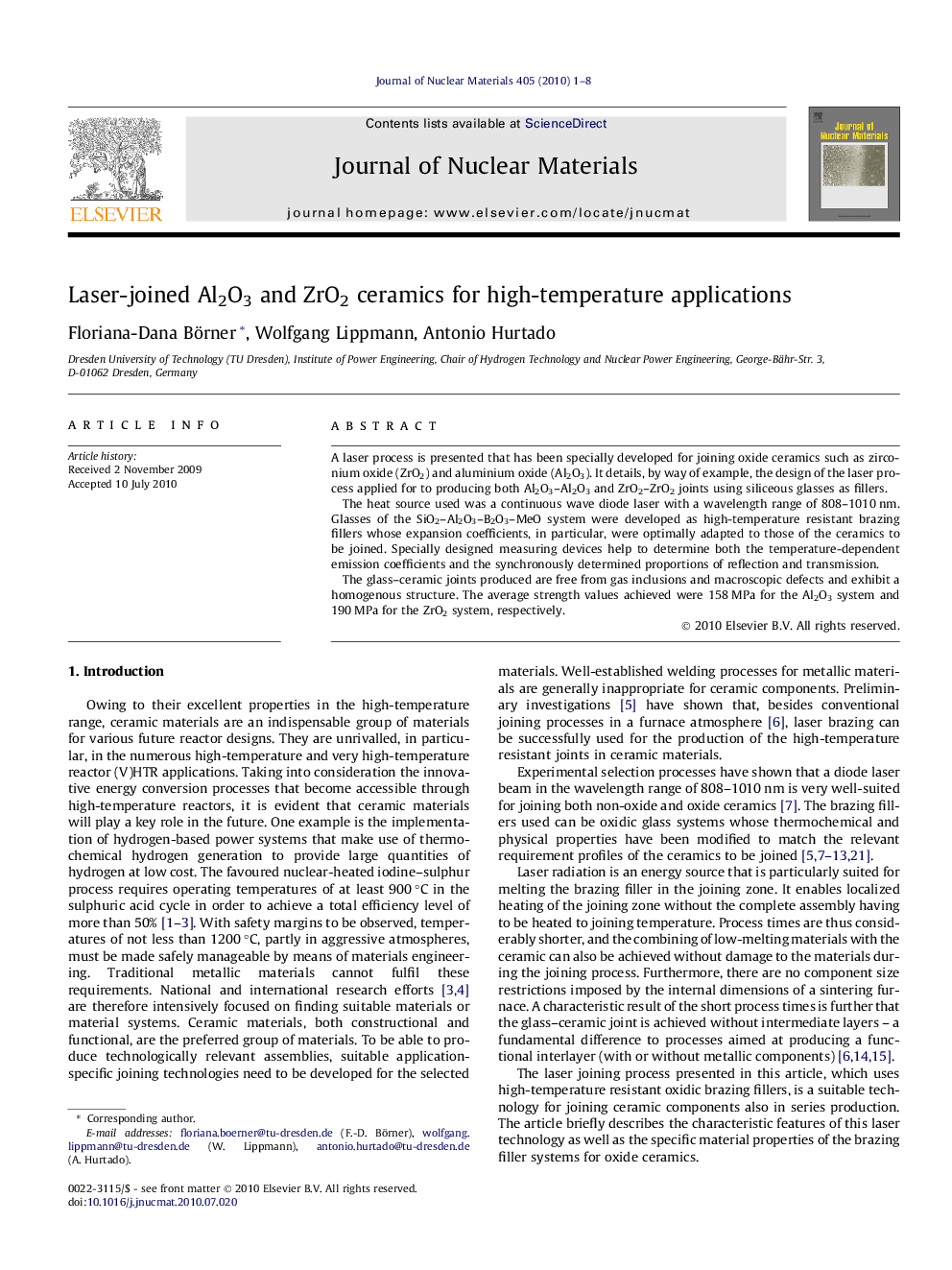| Article ID | Journal | Published Year | Pages | File Type |
|---|---|---|---|---|
| 1567660 | Journal of Nuclear Materials | 2010 | 8 Pages |
A laser process is presented that has been specially developed for joining oxide ceramics such as zirconium oxide (ZrO2) and aluminium oxide (Al2O3). It details, by way of example, the design of the laser process applied for to producing both Al2O3–Al2O3 and ZrO2–ZrO2 joints using siliceous glasses as fillers.The heat source used was a continuous wave diode laser with a wavelength range of 808–1010 nm. Glasses of the SiO2–Al2O3–B2O3–MeO system were developed as high-temperature resistant brazing fillers whose expansion coefficients, in particular, were optimally adapted to those of the ceramics to be joined. Specially designed measuring devices help to determine both the temperature-dependent emission coefficients and the synchronously determined proportions of reflection and transmission.The glass–ceramic joints produced are free from gas inclusions and macroscopic defects and exhibit a homogenous structure. The average strength values achieved were 158 MPa for the Al2O3 system and 190 MPa for the ZrO2 system, respectively.
